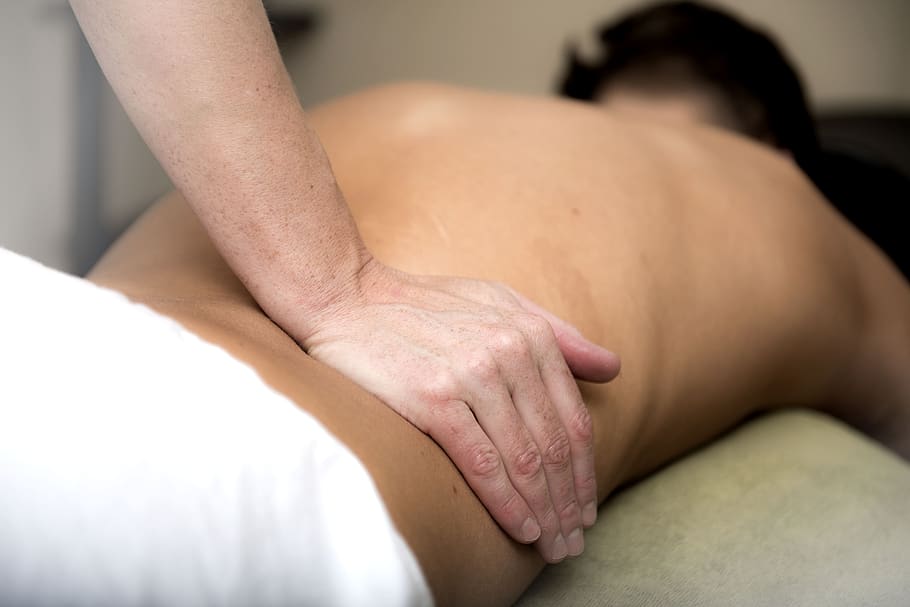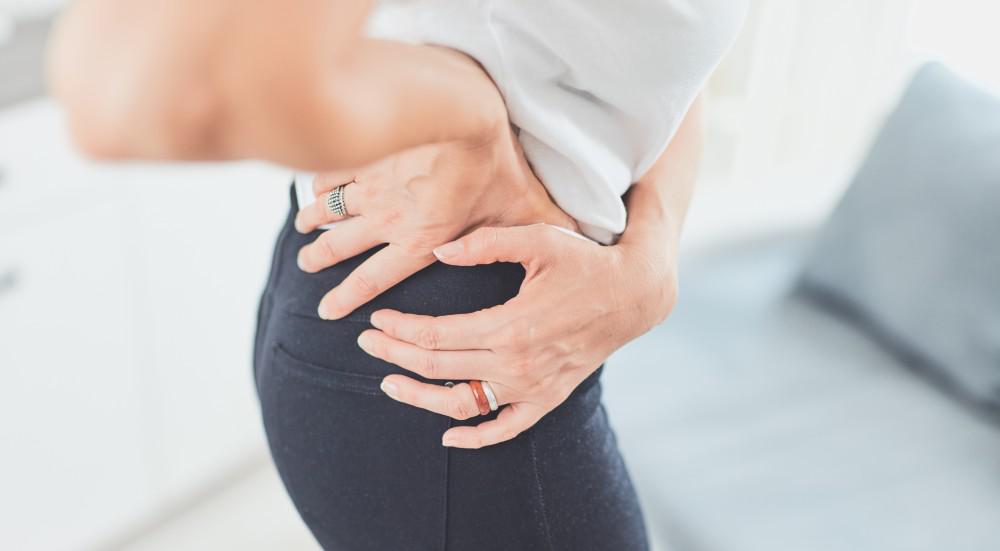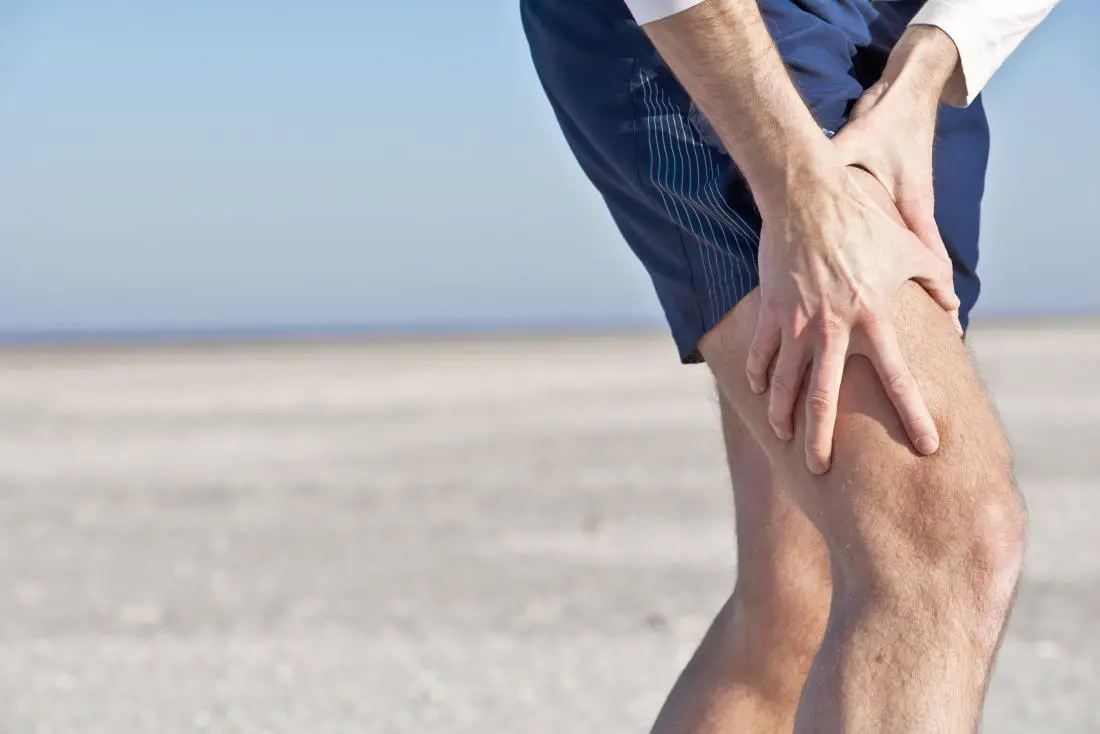Do you suffer from thigh pain? Or, has your doctor diagnosed you with cruralgia ? To avoid more invasive medications and treatments (such as infiltrations and surgery), many people turn to grandmother's remedies that are sometimes very effective for relief.
In this article, you will learn how to recognize and treat cruralgia using 5 natural methods.
Reminder: Definition of cruralgia
Anatomy
Le crural nerve has three roots: the L2, L3 and L4 spinal nerves. These roots arise directly from the spinal cord. They then come out at the level of the conjugation hole of the vertebrae (orifice formed by the meeting of two vertebrae.)
Then they come together to form the crural nerve. This nerve then travels in the pelvis through the psoas then descends to innervate the lower limb passing through the groin, the front of the thigh, then the inside of the tibia and the foot. Involvement of the femoral nerve at the level of its course generates characteristic pain, this condition being qualified as cruralgia.
Cruralgia, short recall (definition)
Cruralgia is neuralgia caused by inflammation of the crural nerve (also called femoral nerve). Pain occurs along the path of this nerve. It starts from the lower back, and continues on the side and oldest boy, then to the lower limb. The pain is sometimes associated with paresthesias (numbness, tingling, tingling, etc.), as well as motor impairment of the leg and foot.
To know everything about cruralgia, see the following article.
Recognize common causes of cruralgia
Crural nerve neuralgia has a common cause: inflammation. Most of the treatments are also focused on controlling this inflammation. Different pathologies can cause cruralgia such as:
Main causes of cruralgia
- la herniated disc
- le narrow lumbar canal (at L3-L4 level)
- scoliosis
- spinal tumors
- osteoarthritis of the vertebrae
- la spondylodiscitis
- certain vascular disorders
Secondary causes
Other factors contribute to the symptoms to a greater or lesser extent, such as:
- the pregnancy
- overweight
- physical inactivity
- the stress
5 home remedies for cruralgia
As mentioned, treatment for cruralgia is generally medical. We think in particular of anti-inflammatory drugs, painkillers, or muscle relaxants.
Physiotherapy (physiotherapy) or osteopathy sessions are also recommended to relieve thigh pain, benefit from adapted exercises, and resume daily activities.
In refractory cases, doctors sometimes prescribe lumbar infiltrations for anti-inflammatory purposes. The last resort is generally surgery, often in the presence of incapacitating pain that persists and limits everyday activities.
However, many patients prefer to opt for natural treatments and grandmother's remedies in order to reduce the pain caused by cruralgia (groin, thigh, etc.). This is intended to avoid the consumption of drugs (and their side effects!), and to relieve oneself when other methods have proved unsuccessful.
Here are 5 home remedies often used in the treatment of cruralgia:
Note: Natural remedies are no substitute for medical treatment. Moreover, they are not supported by solid scientific evidence, although we observe in practice favorable results and a reduction in pain in several cases of cruralgia.
Grandmother's remedies can be applied in addition to a medical approach to obtain more efficiency. On the other hand, it is essential to inform your doctor of any product consumed, in particular in order to avoid drug interactions and side effects.
If in doubt, we strongly advise you to consult a health professional to benefit from treatment adapted to your cruralgia.
1. Thermotherapy
It is the application of hot or cold at the lumbar level. To relieve the pain of cruralgia, choose one of the following treatments according to your comfort. One or the other of the two is to be applied 2 to 3 times a day initially for better effectiveness.
You should apply heat or ice for 10 to 15 minutes at a time.
The hot
Prepare a hot water bottle, or failing that, take a small towel and soak it in hot water. Then apply it to the painful area of the back.
It is also possible to apply heat in the region of the hip, groin or thigh (symptomatology associated with cruralgia). This treatment will reduce muscle tension and thus temporarily relieve pain.
Cold
Take a few ice cubes and wrap them in a clean cloth. Then apply them to the lower part of your back.
Although it is also possible to apply the ice to the thigh, applying ice to the lower back (and not to the groin area) will act directly on the cause of the problem. . Indeed, this will reduce the inflammation at the level of the nerve roots of the crural nerve.
Be careful, do not put ice cubes directly on your skin, at the risk of causing burns.
What to choose between hot and cold for cruralgia?
Le cold and heat treatment are among the heat treatments that help reduce pain. Both are both beneficial for people with cruralgia. Indeed, the cold can act as an anesthetic while the heat helps to reduce the stiffness of the muscles.
Le heat treatment can be performed as first aid in cases of cruralgia. However, it is still important to get diagnosed by a professional. This will ensure proper treatment and also prevent complications.
To further examine the difference between heat and ice in the presence of lower back pain, see the following article.
2. Phytotherapy
Turmeric
Turmeric has a great anti-inflammatory virtue, which is effective when suffering from cruralgia. You can use it by adding it directly to your daily meals or by preparing small remedies.
This grandmother's remedy must last on average at least 1 month to benefit from a long-term effect on pain.
For your meals
Uonly teaspoon of turmeric powder is enough. You divide this dose into three for the three meals of the day. If you don't like the raw taste, you can add the turmeric 5 minutes before the end of cooking your lunch.
Turmeric tea
PTake a turmeric root of about 5 cm. Peel it then grate it. Bring 500 ml of water to the boil then add the turmeric. For more efficiency, add a teaspoon of grated ginger and a pinch of black pepper. Boil on the heat for 5 minutes.
You can also use turmeric powder. The dose will be one tablespoon. Drink 2 to 3 cups of this drink a day. If the taste is intolerable to you, add a teaspoon of honey.
Poultice
PTake a small bowl and pour a full tablespoon of turmeric into it. Add water little by little and mix until you get a soft dough. Then apply this mixture to the painful part of your back or thigh. Leave on for about 15 to 20 minutes then rinse with lukewarm water.
You can use this home remedy up to twice a day to relieve your cruralgia symptoms and see your pain decrease.
Turmeric should be handled with care. Indeed, it is contraindicated in children, pregnant and breastfeeding women. If you take anticoagulants or anti-inflammatories, it will be prudent to avoid the use of turmeric.
3. Arnica to treat cruralgia
Arnica is a plant of the "asteraceae" family. It grows in temperate Nearctic regions.
Since antiquity, arnica has been known for its benefits, especially to stop the itching caused by insect bites. Thanks to helenalin, an active compound it contains, the plant prevents the risk of infection.
Arnica is also rich in anti-inflammatory and analgesic active ingredients. This gives it other therapeutic virtues such as reduction of muscle pain.
The advantage is that this plant can be taken directly. In addition, it also exists in the form of oil, gel and ointment, tablet and even tincture.
The benefits of arnica on cruralgia
Arnica is known to relieve cruralgia. Indeed, it can reduce the intensity of the symptoms of this disease. Moreover, the plant is known to have painkiller properties.
Thanks to its anti-inflammatory effect, it fights inflammation of the crural nerve which will further reduce pain and limit the other symptoms of the disease.
And finally, by its analgesic action, it calms muscle tension and soothes back muscles. It also fights against joint stiffness.
The various products based on arnica effective against cruralgia
Arnica can be taken directly by following the traditional trick. To do this, simply make a mixture of an arnica flower and olive oil. Then, apply the mixture to the area and massage gently.
Arnica also exists in the form of processed products. They are all easy to use.
- In gel, ointment and cream: arnica creams are already available in pharmacies. In addition, they are available without a prescription. To treat pain, simply apply the product to the affected area.
- In arnica essential oil: this oil can be used for the foot bath or also for a massage.
- In homeopathy: in the form of capsules it can be taken orally. But be careful, before consuming it you must have a doctor's prescription.
- In infusion: arnica now exists as a drink. Thanks to this it can improve blood circulation and digestion.
Side effects of arnica
Arnica has some contraindications. It is also a poisonous plant in its raw form. This is why it is necessary to have the opinion of the doctor before taking it.
For people who have allergies to the components of arnica, arnica-based products are not suitable for them.
If a person takes arnica directly, they risk having kidney damage as well as intestinal problems.
Moreover, there are also other drugs that cannot be taken with arnica. This applies in particular to painkillers and medicines that treat heart disease such as blood thinners.
THEarnica is a natural treatment for cruralgia. Associated with other treatments, it is even more effective. Arnica contains various actives that can reduce muscle pain and nerve inflammation. However, before using it, it is always advisable to seek the advice of the attending physician.
4. White willow bark
White willow has been used for thousands of years. Until now, it is used as a natural painkiller. White willow bark contains salicylic acid, which makes this home remedy effective for conditions like fever or body aches.
Practical application
Method of preparation : Boil about 500 ml of water. Then add some willow bark and turn off the heat. Let the preparation infuse for 5 to 10 minutes. Then drink 2 to 3 cups a day for a week.
The use of this grandmother's remedy is contraindicated in children under 6 years of age, in pregnant women and in the event of taking anticoagulants.
5. Anti-inflammatory diet
You can help your body soothe the pain associated with cruralgia by providing it with elements for its defense. Here are some foods to include in your meal to help your body reduce and eliminate inflammation:
- vegetable oils rich in omega-3: sesame oil, linseed oil, rapeseed oil, walnut oil
- vegetables: carrot, beetroot, celery, asparagus, onion, artichoke heart, green bean, pepper, melon
- spices: cayenne pepper, ginger, turmeric
- fruits: pineapple, strawberry, grape, yellow plum, kiwi, blueberry
- meats: beef tongue, pork, white ham
- fish: whiting, salmon, sole, sea bream
To learn more about the anti-inflammatory diet, see the following article.
6. Essential oils
Essential oils are obtained from aromatic plants. The aroma of these plants has important medicinal properties. To treat your cruralgia and relieve your pain, you can use: wintergreen essential oil ou lemon eucalyptus essential oil.
Handling these home remedies requires certain precautions. If in doubt, you should consult an aromatherapy specialist. Do not apply the essential oil directly to your skin. First you need to dilute it in vegetable oil.
Practical application
Pour in a small bowl or in a cup, a tablespoon of vegetable oil. We recommend sweet almond oil. Then add two drops of the essential oil of your choice. Mix and then apply everything on your skin. Gently massage the painful areas (lower back, thigh, leg).
This grandmother's remedy can be used three to four times a day to relieve pain and other symptoms of cruralgia.
Be careful, these essential oils are contraindicated in pregnant women, children and in case of anticoagulant treatment.
To find out more about natural products in order to treat back pain and cruralgia, see the following article.
Projects
- Guide to phyto-aromatherapy, Dr Cécile CORNAZ
- Encyclopedia of medicinal plants, Larousse
- I take care of my back, Ornella Laburthe
- Essential oils – The practical guide to aromatherapy, Ségurat Marie











